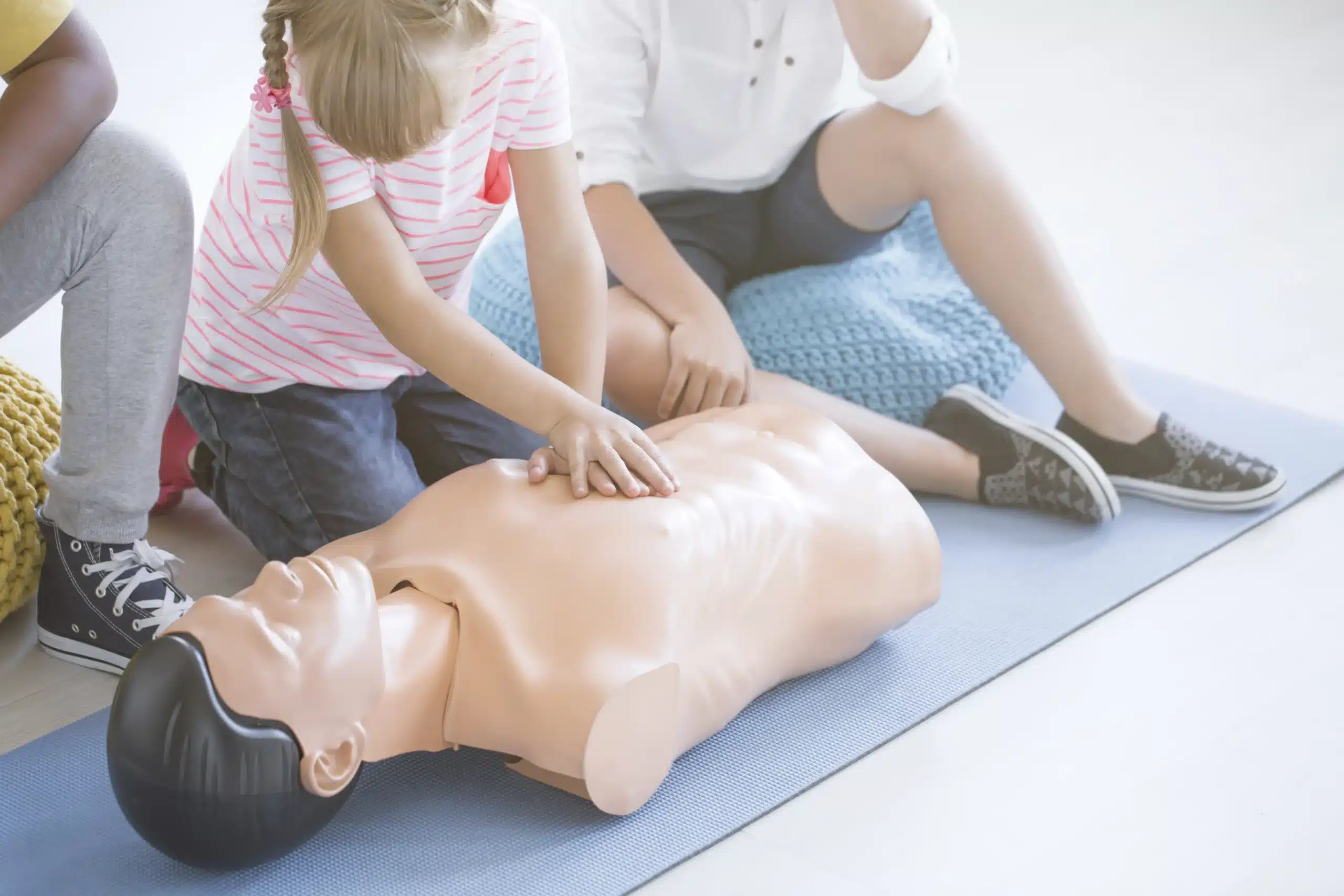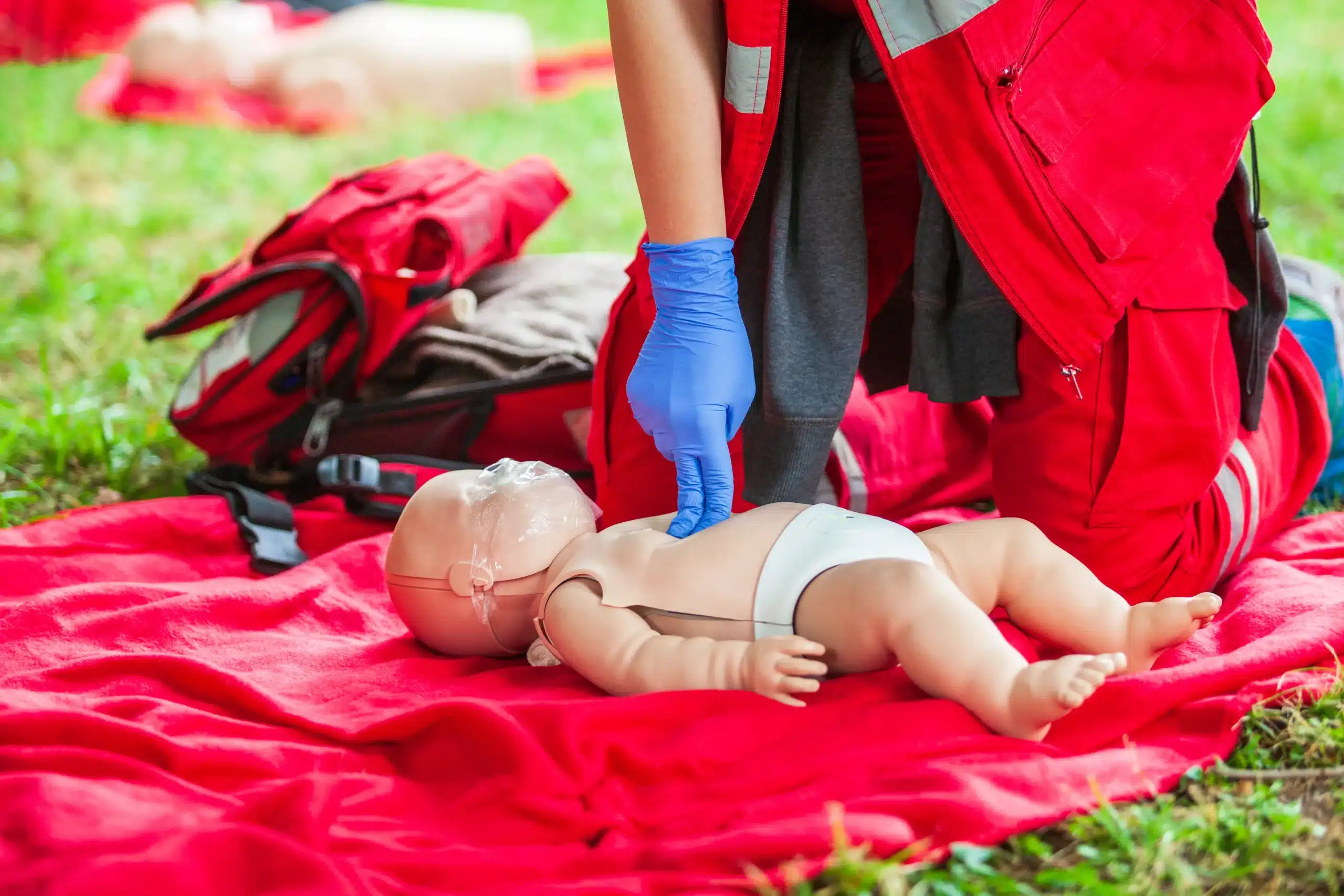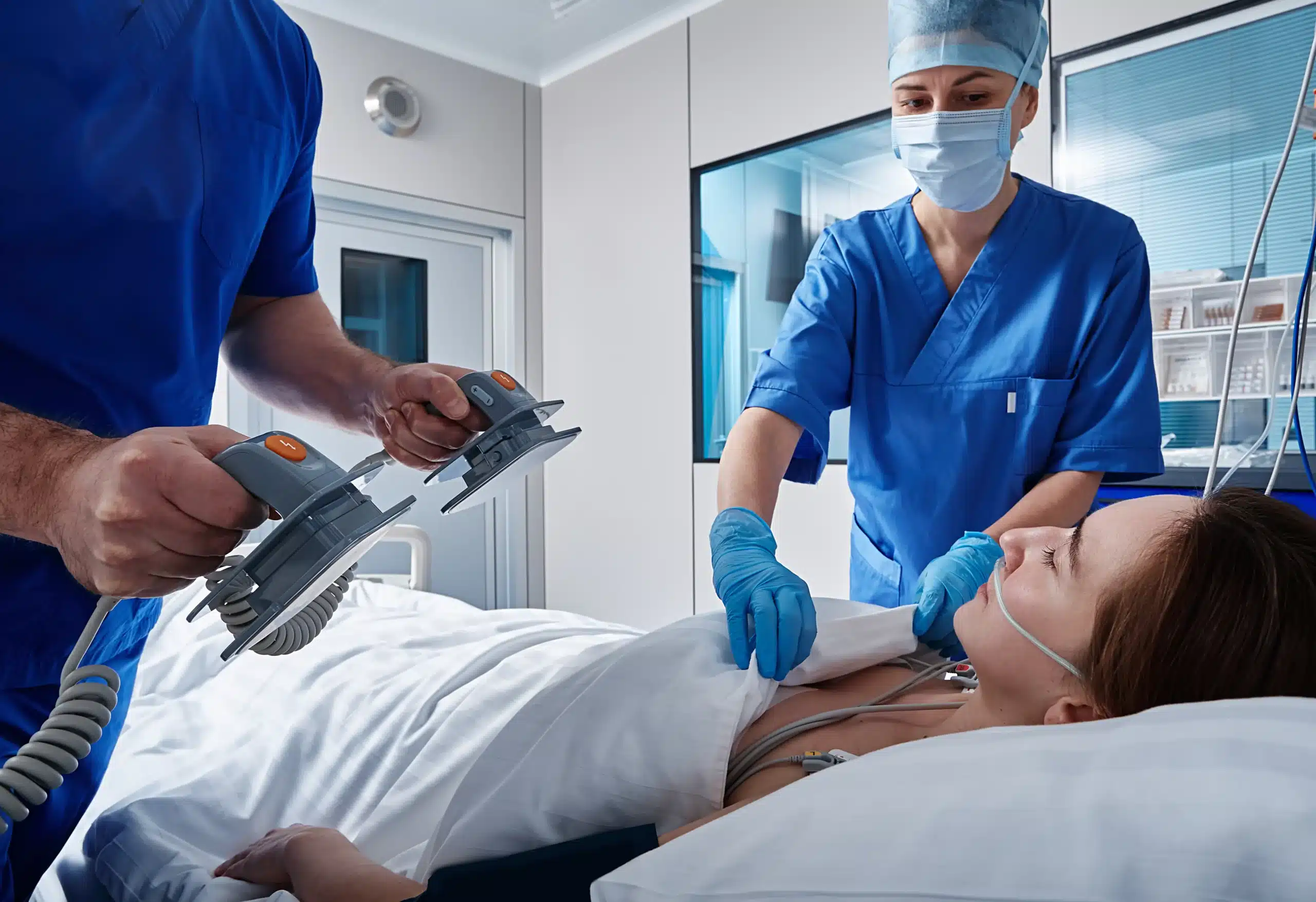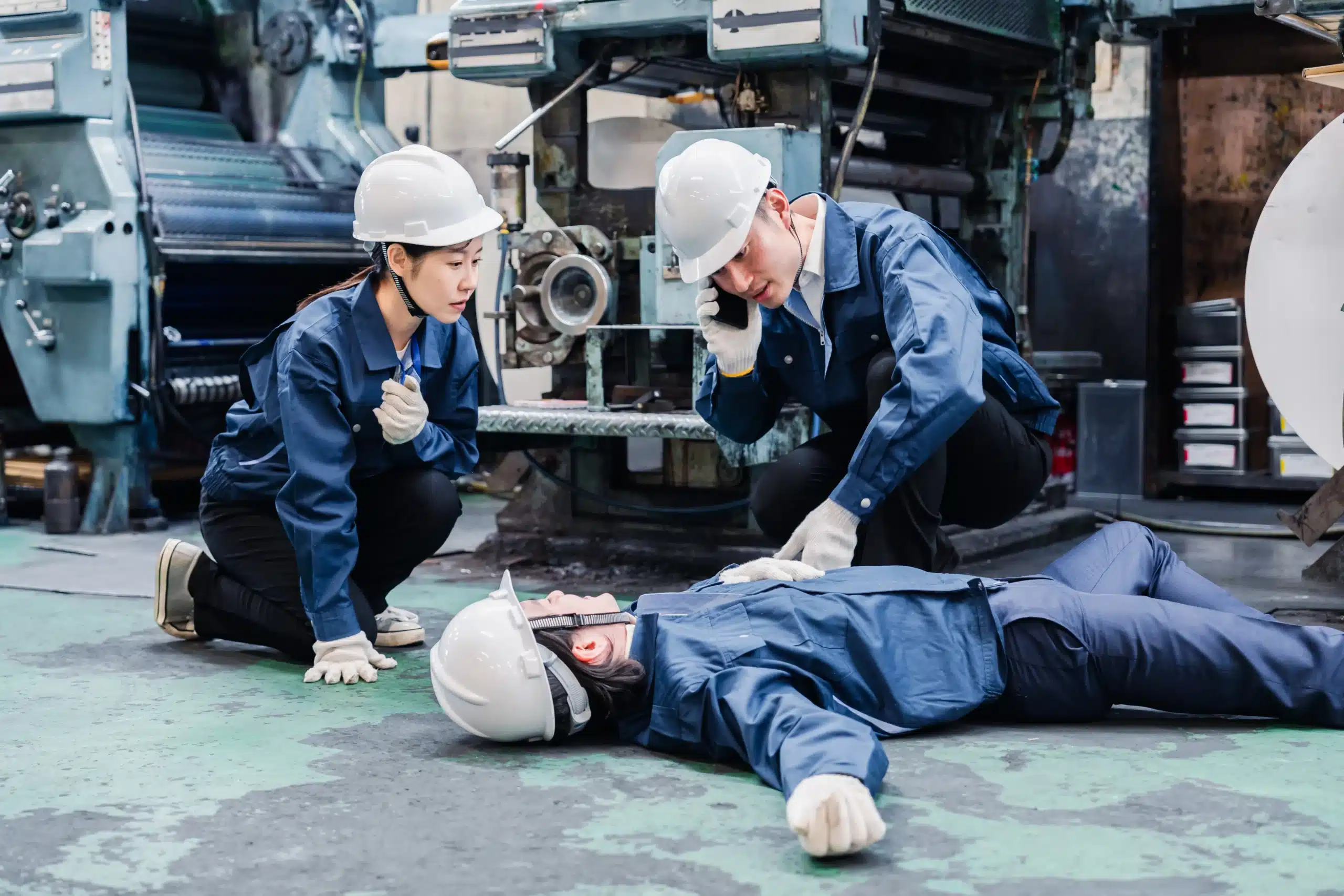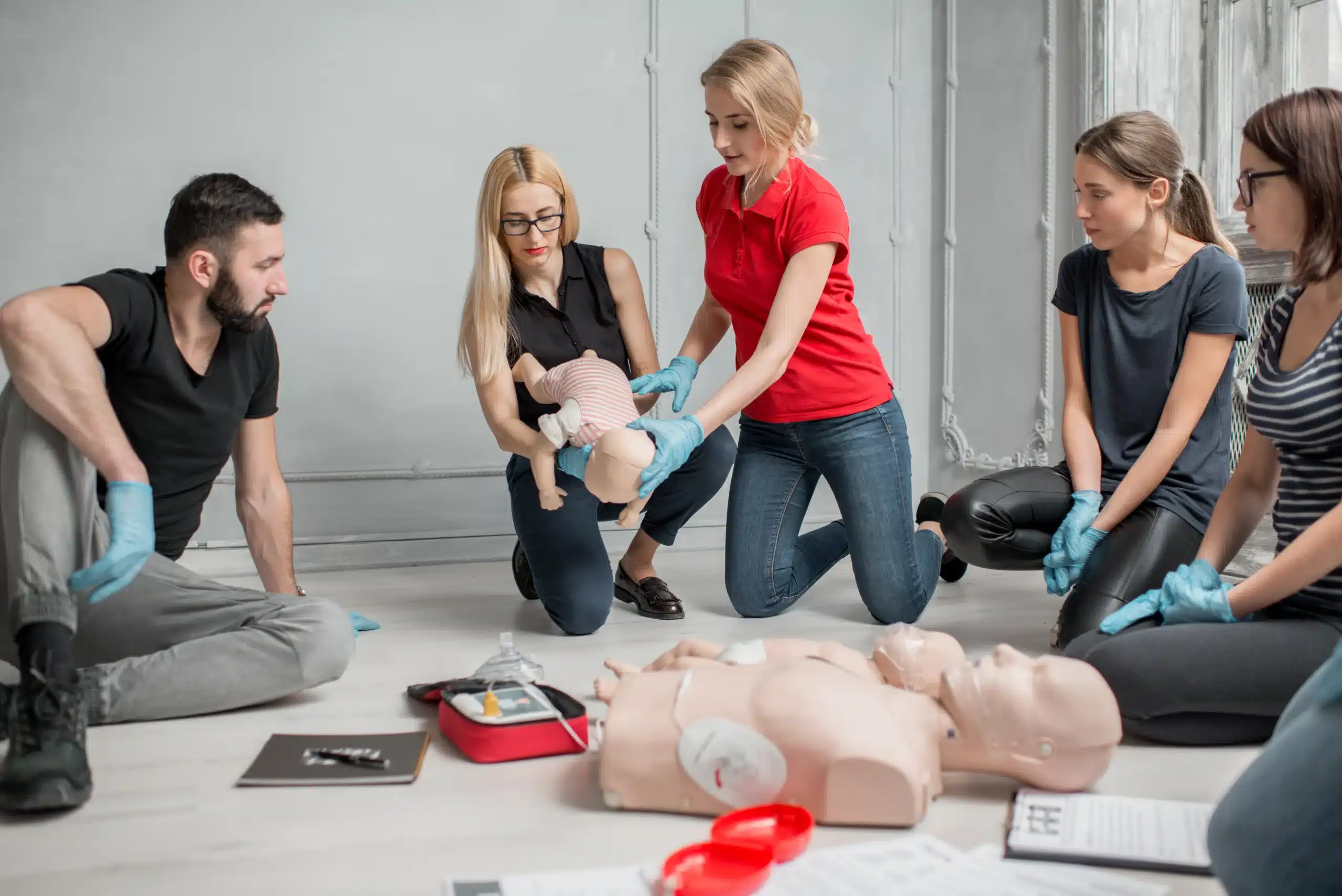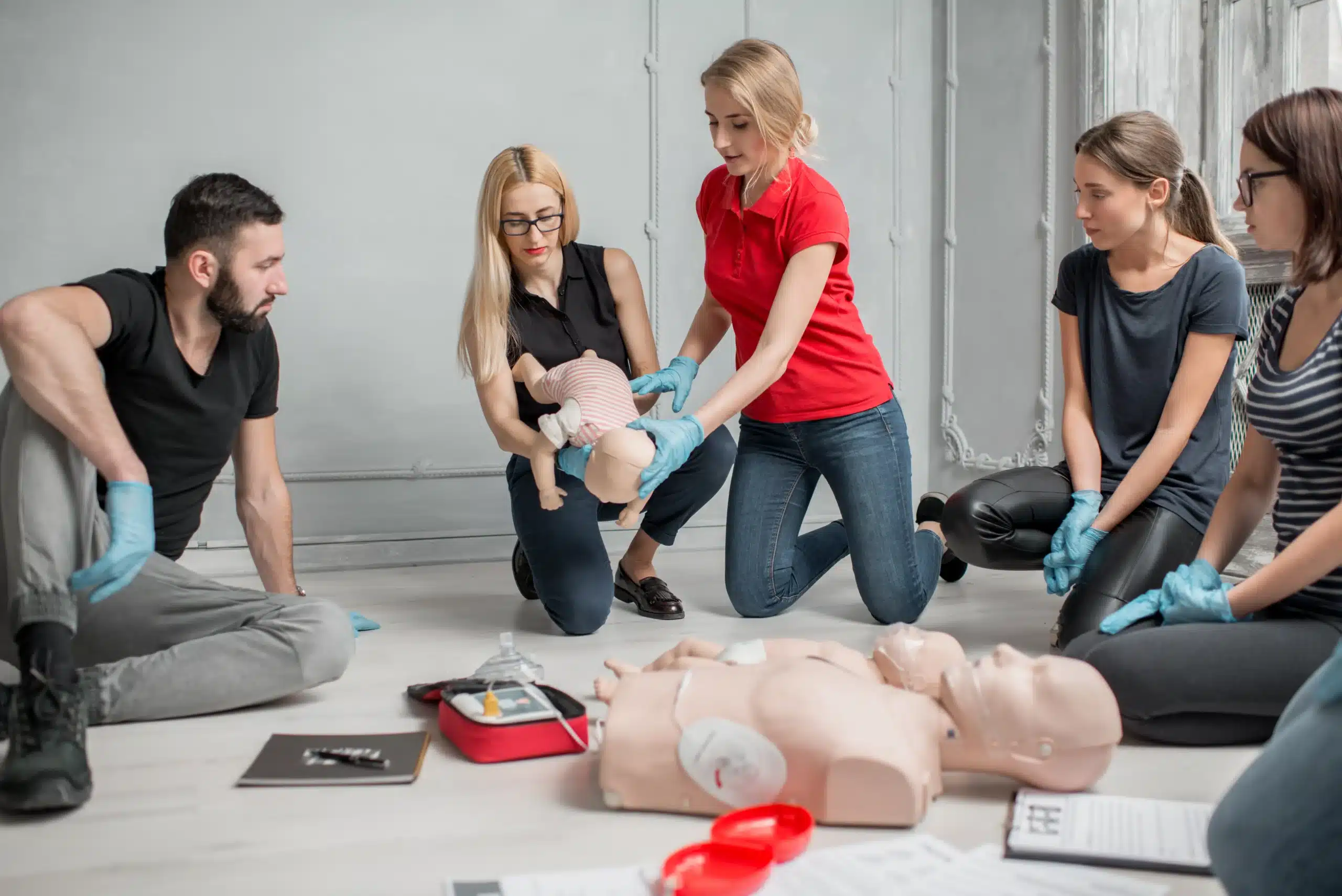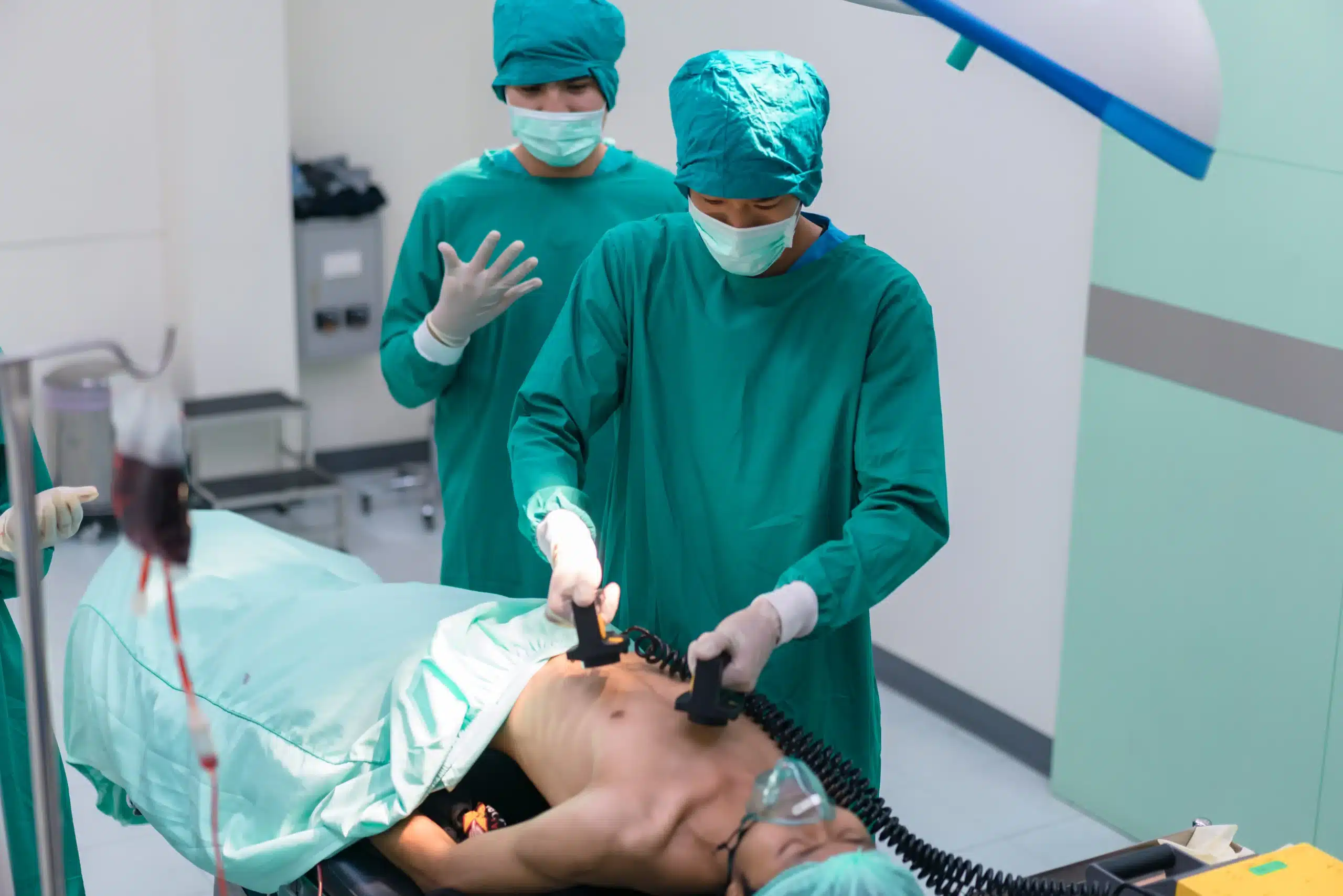Bringing a new life into the world is a joyous experience, filled with love, late-night feedings, and a whole lot of learning. As new parents, we instinctively want to protect our little ones from harm. But what happens when the unexpected occurs? Equipping yourself with CPR and first aid skills is one of the most empowering things you can do to ensure your baby’s safety. This training goes beyond simply knowing what to do; it instills confidence and prepares you to respond effectively in a crisis. If you’re a new parent in Milpitas, CPR and First Aid for new parents in Milpitas is essential knowledge. This article will guide you through everything you need to know about finding the right CPR and first aid training, including what to expect in class, local training providers, and the essential skills you’ll gain.
Key Takeaways
- CPR and first aid skills are essential for parents: These skills empower you to confidently handle childhood emergencies, from minor injuries to life-threatening situations. Seek training that covers infant CPR, choking response, and common childhood ailments.
- Find a course that fits your lifestyle: Consider factors like class location, schedule, and format (in-person or online) to ensure the training aligns with your needs. Look for hands-on practice and instructors with relevant experience.
- Stay current with CPR and first aid best practices: Regularly review your skills, take refresher courses, and utilize online resources to maintain your knowledge and confidence. Staying up-to-date ensures you’re always prepared to respond effectively.
Why New Parents Need CPR and First Aid Training
Becoming a parent brings so much joy, but also a whole new set of responsibilities. You’re constantly looking out for your little one’s well-being, and learning CPR and first aid equips you to handle unexpected emergencies. It’s like adding a crucial safety net to your parenting journey. Knowing how to respond effectively can truly be life-saving.
During those early years, children are naturally curious and active, which unfortunately can lead to minor injuries and sometimes more serious incidents. As a parent, you’re their immediate caregiver and protector. CPR and first aid training empowers you to act quickly and confidently if your child is choking, has an allergic reaction, or experiences a sudden injury. It’s all about being prepared and knowing you can handle any situation that arises.
These classes go beyond simply learning techniques; they build your confidence and equip you with essential skills. The hands-on practice and realistic scenarios help you develop the muscle memory and quick thinking needed in a real emergency. Milpitas CPR Classes offers a supportive learning environment where you can practice with other parents, ask questions, and gain the assurance you need to protect your child. The courses cover everything from basic first aid for common childhood injuries to infant CPR. Knowing you have these skills can bring a sense of calm, allowing you to enjoy parenthood more fully. It’s a valuable investment of your time, knowing you’re gaining skills that could potentially save a life. The small class sizes at Safety Training Seminars allow for personalized attention, ensuring you master these vital skills.
CPR and First Aid Classes for New Parents in Milpitas
As a new parent, you’re responsible for a tiny human’s well-being, and that can feel overwhelming. Equipping yourself with CPR and first aid skills can bring you confidence and peace of mind. Here’s a rundown of training options in and around Milpitas:
American Heart Association Courses
The American Heart Association (AHA) sets the standard for CPR and first aid training. Their courses cover essential life-saving techniques for infants, children, and adults, often including instruction on using an AED (automated external defibrillator). Milpitas CPR Classes offers several AHA courses, including BLS, ACLS, and PALS, providing comprehensive training and official certification. You can also find AHA-certified courses through hospitals, community centers, and independent instructors.
Red Cross Offerings
The American Red Cross also offers various CPR and first aid classes suitable for new parents. Their curriculum covers similar topics as the AHA courses, including infant and child CPR, AED use, and basic first aid. The Red Cross has a strong presence in many communities. Check their website for local class schedules.
Specialized Pediatric First Aid Programs
For more in-depth training focused on infants and children, specialized pediatric first aid programs are a great option. These courses offer more comprehensive guidance on common childhood illnesses and injuries. They may also cover topics like allergic reactions, choking hazards, and fever management. Look for programs from organizations like the National Safety Council or ask your pediatrician for recommendations.
Essential Skills for New Parent CPR and First Aid
As a new parent, you’re constantly learning. Adding CPR and first aid skills to your toolkit will equip you to handle emergencies with confidence. These skills go beyond the basics, providing you with the tools to respond effectively to situations specific to infants and toddlers.
Infant CPR
Infant CPR differs from adult CPR. It involves gentler techniques adapted to a baby’s delicate physiology. You’ll learn how to assess an unresponsive infant, deliver chest compressions and rescue breaths, and manage a blocked airway. Knowing how to perform infant CPR can be life-saving. Courses like the ones offered by Milpitas CPR Classes provide hands-on practice so you can feel prepared.
Choking Response for Babies and Toddlers
Choking is a common hazard for young children. A CPR and first aid class will teach you how to recognize the signs of choking in both babies and toddlers. You’ll learn back blows and chest thrusts for infants and the Heimlich maneuver for toddlers. These techniques can quickly dislodge an obstruction and restore airflow. Safety Training Seminars offer comprehensive choking relief training, giving you the skills to react swiftly.
Handling Common Childhood Injuries
Beyond CPR and choking, a pediatric first aid course covers common childhood injuries. You’ll learn how to treat minor cuts, scrapes, burns, and bumps. Understanding how to manage fevers, allergic reactions, and other common ailments is also covered. These skills empower you to provide immediate care while awaiting professional medical assistance if needed. First aid classes often cover these topics, providing practical advice for new parents.
What to Expect in Class
Knowing what to expect can help you feel prepared and ready to learn these lifesaving skills. Here’s a glimpse into a typical CPR and first aid class:
Class Format and Duration
CPR and first aid classes are designed to fit your busy schedule. Classes are available daily, including weekends, from 8 am to 10 pm. You can find a time that works for you, whether it’s a weekday evening or a weekend afternoon. These courses are generally between two and four hours, offering a manageable time commitment while covering essential material. For those looking for training at their home or office, providers like In-Home CPR offer flexible scheduling options.
Hands-on Practice
These courses prioritize hands-on learning. Expect interactive scenarios and small group interaction, creating a dynamic and engaging learning experience. The emphasis on hands-on training helps build confidence in your ability to respond effectively in real-life emergencies. You’ll get plenty of opportunities to practice the skills you learn, ensuring you feel comfortable and prepared to use them when it matters most. Providers like Emergency & Health Training Center are known for their focus on practical application.
Certification
Upon successful completion of your chosen course, you’ll receive an official certification card. These certifications are typically valid for two years and are often provided by organizations like the American Heart Association. These certifications are recognized globally, enhancing your career prospects and demonstrating your competence in emergency response. Remember to check with your specific training provider, such as Milpitas CPR Classes, for details about certification validity and renewal requirements.
Costs and Registration
Knowing the cost and how to register is often the first step. We’ve outlined key details about pricing, registration, and ways to save on CPR and first aid training to help you get started.
Course Pricing
Course costs vary depending on the certification you need. For example, the BLS Provider course is $70, while the ACLS Renewal is $190. The combined CPR/AED and Adult First Aid course is $65. For a full list of course prices, visit the Milpitas CPR Classes website.
Registration
Registering for a class is easy. Classes are offered daily, including weekends, from 8 am to 10 pm. This flexible schedule makes it easier to fit a class into your busy life. Online registration is available for quick and convenient sign-up.
Discounts and Private Sessions
Want to make training more affordable? Discounts are available for group registrations. Check the website for current promotional codes to save on costs when registering with a group. For larger groups or personalized learning, private classes can be arranged at your home or business. And, no deposit is required—payment is due after the class. Contact Milpitas CPR Classes for more information on private sessions and group discounts.
Instructor Qualifications
As a new parent, you want the best possible training to care for your little one. Knowing your instructor’s qualifications will give you confidence in your chosen CPR and first aid course. Look for certified instructors with real-world experience.
Certifications and Expertise
Instructors teaching CPR and first aid classes should hold certifications from recognized organizations like the American Heart Association (AHA) or the Red Cross. Milpitas CPR Classes offers AHA-certified courses, ensuring your training aligns with the latest emergency care guidelines. These certifications demonstrate an instructor’s in-depth knowledge and practical skills. Beyond general CPR and first aid, certifications like Basic Life Support (BLS), Advanced Cardiovascular Life Support (ACLS), and Pediatric Advanced Life Support (PALS) indicate specialized training. Check if your instructor has these advanced certifications, especially if you’re a healthcare provider. The Emergency & Health Training Center in Milpitas also provides AHA-certified courses.
Emergency Response Experience
While certifications are essential, real-world experience adds another layer of valuable expertise. Instructors with backgrounds as EMTs, RNs, or paramedics bring firsthand knowledge of emergency situations to the classroom. In-Home CPR staffs its courses with experienced medical professionals. This practical experience translates to more realistic training and a deeper understanding of how to respond under pressure. Look for classes that incorporate interactive scenarios and hands-on practice, like those offered by Safety Training Seminars. This approach helps build confidence and prepares you to handle real-life emergencies.
Benefits of Certification
Getting certified in CPR and first aid offers several significant advantages, especially for new parents. It’s more than just a credential—it’s about equipping yourself with the skills and confidence to handle emergencies effectively. Here’s why certification matters:
Confidence in Emergencies
As a new parent, you’re responsible for a tiny human’s well-being, and emergencies can feel overwhelming. CPR and first aid certification courses emphasize hands-on training in a low-stress environment. This practical training prepares you to act decisively when seconds count, building the confidence you need to respond quickly and effectively if your child ever needs you. Knowing you have the skills to handle a crisis can make all the difference.
Responding to Accidents
Accidents happen, especially with curious little ones. CPR and first aid training covers a wide range of situations, from basic life support for infants, children, and adults to choking relief and using an AED. It equips you to handle common childhood injuries like cuts, burns, and falls, as well as more serious emergencies. Having these skills readily available can significantly impact the outcome of an accident. For new parents in Milpitas, finding a reliable training center like Milpitas CPR Classes offers comprehensive instruction and certification.
Peace of Mind
Holding an American Heart Association certification provides valuable peace of mind. These certifications are recognized worldwide, demonstrating your competence in emergency response. Knowing you’re prepared for the unexpected can alleviate anxiety and allow you to enjoy parenthood more fully. It’s an investment in your child’s safety and your own peace of mind. Being prepared can truly make all the difference in an emergency situation.
Preparing for Class
Getting ready for your CPR and First Aid class doesn’t require a ton of prep, but a few simple steps will make sure you get the most out of your training. Knowing what to expect and how to prepare can help you feel confident and ready to learn these lifesaving skills.
What to Bring
One of the best parts about taking a CPR and First Aid class through Milpitas CPR Classes is the convenience. The classes are taught at your location, whether it’s your home or business. This is especially helpful for busy new parents in Milpitas, San Jose, and Santa Clara. You don’t need to worry about finding childcare or commuting. Just focus on learning. And another perk? No deposit is required—payment is due after the class.
Pre-class Study
While not mandatory, reviewing some basic CPR and First Aid information before class can be beneficial. Think of it as a warm-up for your brain. A little pre-class familiarization can help you absorb the information more effectively during the hands-on training. Many programs, including those offered by Milpitas CPR Classes, emphasize a low-stress, hands-on approach. This helps build confidence, which is key, especially for new parents who might feel anxious about facing emergency situations.
Dress Code
Comfort is key when it comes to what to wear to your CPR class. You’ll be participating in interactive scenarios and hands-on practice, so choose clothing that allows you to move freely. Think comfortable pants and a t-shirt. Classes typically involve small group interaction and a manageable time commitment (generally 2–4 hours), so you won’t need to block out your entire day.
Maintaining Your Skills
Once you’ve earned your CPR and first aid certification, staying sharp is key. Regularly reviewing and practicing these skills ensures you’re always prepared to act quickly and confidently in an emergency. Here’s how to keep your skills current:
Refresher Courses
The best way to stay on top of any updates to CPR techniques is by taking refresher courses. These courses reinforce your knowledge and introduce any new guidelines from organizations like the American Heart Association. Providers like Milpitas CPR Classes offer a variety of refresher courses, including BLS, ACLS, and PALS, ensuring you have the most current information. For convenient scheduling, check with local providers or look into options like In-Home CPR.
Practice at Home
Hands-on practice is crucial for maintaining muscle memory and confidence. After your initial training, practice the techniques you learned at home. You can use a CPR manikin if you have one or simply visualize the steps and motions. Regular practice, even for a few minutes each month, can make a significant difference in your response time and effectiveness during a real emergency. Safety Training Seminars emphasizes the importance of this practice.
Online Resources
Supplement your in-person training with online resources. Many organizations offer videos and tutorials to help you refresh your skills. These resources can be a convenient way to review key steps and stay updated on the latest recommendations. Some training centers, like the Emergency & Health Training Center, even incorporate online components into their courses, providing flexible learning options.
Local Training Providers in Milpitas
Finding the right CPR and first aid training can feel overwhelming, but thankfully, Milpitas has several excellent options. Whether you prefer in-person instruction or the convenience of in-home training, you’ll find a course that fits your needs and schedule. Here are a few local providers to consider:
Milpitas CPR Classes
Milpitas CPR Classes offers American Heart Association (AHA) certification courses in CPR, BLS (Basic Life Support), ACLS (Advanced Cardiovascular Life Support), PALS (Pediatric Advanced Life Support), and First Aid. These courses are ideal for healthcare providers and anyone seeking comprehensive training. Their classes often incorporate interactive scenarios, hands-on practice, and small group interaction, creating a supportive learning environment. You can find more information on their BLS course here, ACLS training here, and CPR and First Aid certification here. They also offer the RQI program for healthcare professionals looking to maintain their resuscitation skills, which you can learn about here.
In-Home CPR
For new parents or busy caregivers, In-Home CPR offers the convenience of training in your own home or at your workplace. They provide a variety of CPR and first aid certification classes, taught by experienced EMTs, RNs, and paramedics. Their flexible scheduling, including evenings and weekends, makes it easier to fit training into your busy life. They also offer CPR Essentials, a pediatric-focused class designed for new and expecting parents. This class covers essential skills like infant CPR, choking response, and how to handle allergic reactions. You can explore their CPR class options for Milpitas residents here.
Emergency & Health Training Center
The Emergency & Health Training Center in Milpitas provides AHA-certified CPR and first aid classes. They focus on creating a low-stress learning environment with hands-on training to help participants build confidence in their ability to respond to emergencies. Their emphasis on practical skills makes them a solid choice for anyone looking for effective and engaging training. Learn more about their CPR and first aid classes in Milpitas here.
Safety Training Seminars
Safety Training Seminars is another excellent option for AHA-certified courses in Milpitas. They offer a range of courses, including CPR, BLS, ACLS, PALS, and First Aid. Their classes typically involve interactive scenarios, hands-on practice, and small group interaction, all within a manageable timeframe, usually between two and four hours. Visit their website here for more information on their course offerings and schedules.
Related Articles
- Pediatric CPR & First Aid Classes in San Jose – Milpitas CPR Classes
- Find CPR Certification Near Me: A Practical Guide – Milpitas CPR Classes
- First-Aid Training in Santa Clara: Your Guide – Milpitas CPR Classes
- CPR Certification in San Jose: Your Complete Guide – Milpitas CPR Classes
- Why CPR Is Vital in Healthcare & How to Get Certified
Frequently Asked Questions
Q: How often do I need to renew my CPR and first aid certification? CPR and first aid certifications are typically valid for two years. It’s a good idea to check with your certifying organization, such as the American Heart Association or the Red Cross, for their specific renewal requirements.
Q: What if I’m nervous about performing CPR in a real emergency? It’s completely normal to feel nervous about using CPR in a real-life situation. That’s why hands-on practice in a supportive class environment is so important. These classes help build your confidence and develop the muscle memory you need to respond effectively under pressure.
Q: Are online CPR and first aid courses as effective as in-person classes? While online resources can be helpful for reviewing material, in-person classes offer the crucial benefit of hands-on practice and feedback from a certified instructor. This direct interaction is essential for mastering the techniques and gaining the confidence to use them in a real emergency.
Q: What’s the difference between CPR and first aid? CPR focuses specifically on restoring breathing and circulation in someone who has stopped breathing or has no pulse. First aid covers a broader range of skills for treating injuries and illnesses, such as cuts, burns, allergic reactions, and choking. Both are valuable skills to have, especially as a new parent.
Q: How can I find a CPR and first aid class near me? Several organizations offer CPR and first aid classes. The American Heart Association and the Red Cross have websites with class locators. You can also check with local hospitals, community centers, and private training providers. Many providers offer flexible scheduling options, including evening and weekend classes, to accommodate busy schedules.
